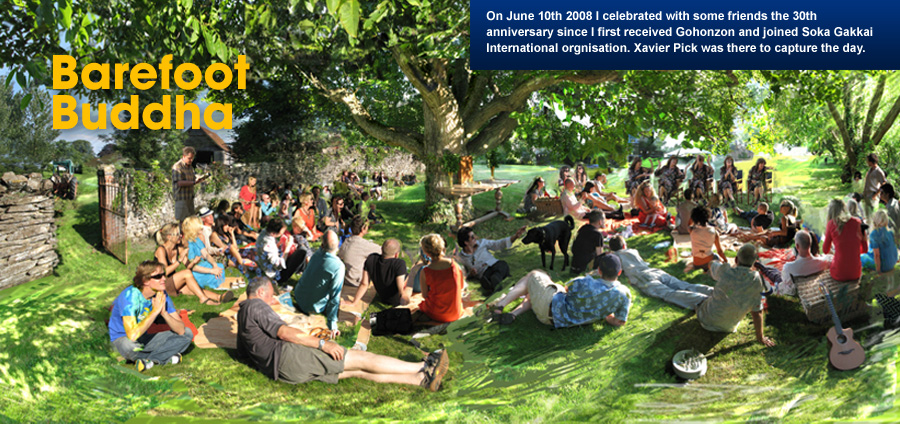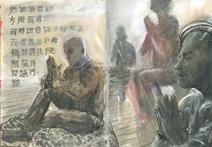
Practice
There are three basics in applying Buddhism: faith, practice and study.

They are the primary ingredients in the recipe for developing our innate enlightened condition, or Buddhahood. All three are essential.

With this recipe, we will experience actual proof of our transformation in the forms of conspicuous and inconspicuous benefit.
In Buddhism, faith is based on experience. Nichiren Daishonin’s Buddhism emphasizes obtaining actual proof of the teaching’s power.
At the start of our journey, if we are willing to try the practice and anticipate some result, we will then develop our faith brick by brick as examples of actual proof accrue.

Practice in Nichiren Buddhism consists of two parts: practice for ourselves and practice for others.
We strengthen our wisdom and vital life force by actualizing our Buddhahood each day.
To develop faith, we must take action.

Practice for ourselves is primarily the chanting of Nam-myoho-renge-kyo.
Practice for others consists of action based on compassion to help give others the means to make fundamental improvements in their lives,

More than 700 years ago, Nichiren instructed followers in the correct way to practice.
Nichiren’s writings, which have been preserved and translated into English, give us valuable insight into how this practice will benefit us today by chanting Nam-Myoho-Renge-Kyo.

To gain confidence that this practice is valid, it is essential to study the tenets of this Buddhism.
The basis of study comes from the founder himself, Nichiren Daishonin.
Nam-myoho-renge-kyo

This is the name of the Mystic Law that governs life eternally throughout the universe.
Thus when we chant this Mystic Law, we attune our lives to the perfect rhythm of the universe.
Nam-myoho-renge-kyo is the basic prayer, or chant, of Nichiren Buddhism.

Why These Words?
Myoho-renge-kyo is the Lotus Sutra’s title, Shakyamuni’s highest teaching.
Nichiren Daishonin later added namu (contracted to nam) which means devotion.
Prayer
Unlike in most Western religions, when we chant we are not praying to an external deity invested with human qualities like judgment.
Our prayers are communicated to the depths of our being when we invoke the sound of the Mystic Law.
This universal Law is impartial, and no prayer is more or less worthy than another. The only issue is whether we can create
value in our lives and help others do the same.

The Gohonzon
The Daishonin inscribed his enlightenment in the form of a mandala called the Gohonzon, a graphical depiction of his Buddhahood.
This is why the Daishonin calls the Gohonzon a mirror for the inner self. It is a way to see inside, to begin changing what we don’t like and strengthening what we do like.
When we fuse our lives with the Gohonzon by chanting Nam-myoho-renge-kyo to it, we tap into that enlightened life-condition, our own Buddhahood.

The important point here is that the same potential for enlightenment, or Buddahood, exists within each of us.
The first milestone after beginning one’s practice is to receive the Gohonzon, the object of devotion for Nichiren Daishonin’s Buddhism.
Once people begin experiencing the benefits of chanting, they may decide to make a deeper commitment and begin a more complete Buddhist practice.
How Often Do We Chant?
We are also free to chant as often as we like. The duration of any particular chanting session is up to each individual’s preferences and needs.

Our basic ritual, which includes chanting Nam-myoho-renge-kyo, reciting sections of the Lotus Sutra, and offering silent prayers, is carried out diligently each morning and evening.
As practitioners of Nichiren Buddhism, the SGI’s ultimate purpose is to contribute to the establishment of a peaceful world where all people experience happiness.

